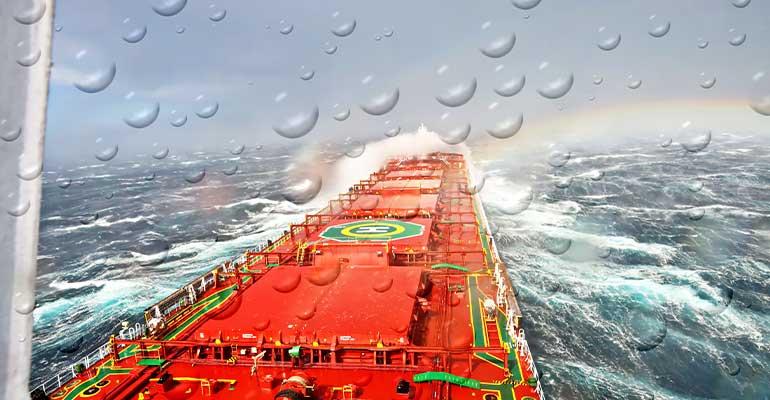Probabilistic forecasting, developed by Japanese headquartered Weathernews Inc (WNI), is taking weather routeing for ships and maritime assets to a new level, presenting new opportunities for risk management and operational efficiency, according to a leading meteorologist based at the company’s US headquarters in Norman, Oklahoma.
Amy Buhl, who studied meteorology at the adjacent University of Oklahoma School of Meteorology two decades ago, is now the company’s General Manager, Marine Group Operations for Europe and the Americas. Extreme weather events as a result of climate change are now far more common, she told journalists during a webinar yesterday, pointing to a greater frequency of tropical cyclones, heat waves, floods and droughts.
She cited disruption at the Panama Canal as a timely example of the impact on shipping of changing weather systems. She also revealed that Weathernews data demonstrates that although many ships use weather routeing systems to optimise their voyages, the average length and duration of trans-Pacific trips has actually increased in recent times. This, she said, was a result of increasing uncertainty about weather events.
With 400 meteorologists based at the Oklahoma site, the company has a hands-on approach to gathering data. About 6,000 ships provide WNI with weather data every day, as well as many aircraft and other sources. Growing uncertainty is, however, a reality, Buhl said, but probabilistic forecasts can help to identify weaknesses in single model predictions, facilitating far more strategic decision-making.
Armed with this sort of analysis, owners and operators can align their voyage strategies more closely with the vessels themselves, their intended voyages, and other operational metrics. Depending on their approach to risk, a ship operator could take a shorter route with a higher probability of large waves, for example, or a longer trip with lower wave risk.
Probabilistic forecasting is also particularly relevant for other maritime activities. For cruise lines, it is important to minimise passenger discomfort. For wind farm operators, it can help with predictions on likely wind strengths. And for the installers of wind farms and subsea infrastructure, it can support the optimisation of uptime and operational efficiency.
The enhanced approach to forecasting also has operational implications for owners and charterers. Will a vessel meet her laycan window? Will fuel consumption meet targets? Will the vessel redeliver with carbon intensity indicator (CII) performance commensurate with that set out in the charterparty?
One thing is certain, Buhl concluded. That is: uncertainty is a reality in weather forecasting. But probabilistic forecasting has been successfully applied in other sectors including financial markets, agriculture, and supply chain resilience.
Shipping, as a key link in the supply chain, can now benefit from the same probabilistic principles.
Copyright © 2024. All rights reserved. Seatrade, a trading name of Informa Markets (UK) Limited.
Add Seatrade Maritime News to your Google News feed.  |

